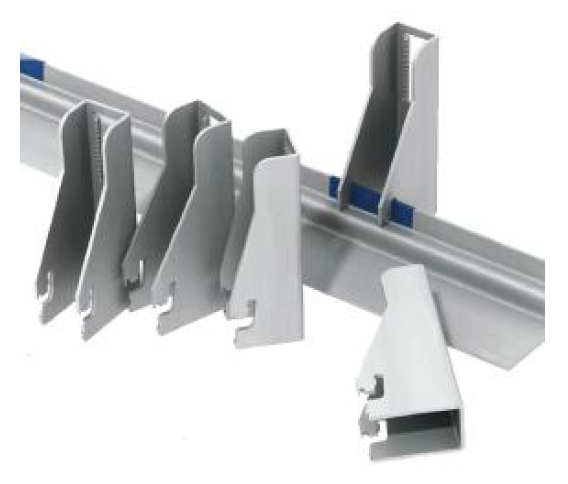
- Mobile Phone
- +8613931874955
- sales@cntcmetal.com
Exploring the Characteristics and Applications of Small Conical Compression Springs
Exploring Small Conical Compression Springs A Comprehensive Guide
Small conical compression springs are essential components commonly employed in various mechanical applications. Their unique design, characterized by an increasing diameter from one end to the other, allows them to provide an effective force in a compact form factor. Unlike traditional cylindrical springs, conical springs offer advantages related to space efficiency, customization, and load distribution. This article delves into the fundamental aspects of small conical compression springs, including their design, applications, benefits, and considerations when selecting them for specific projects.
Design Characteristics
The design of small conical compression springs is what sets them apart from standard compression springs. These springs taper from a larger diameter at one end to a smaller diameter at the other, which allows for a more gradual and controlled compression. This design enables the spring to maintain a higher level of strength and stability under load while reducing the overall height needed for installation. The conical shape also permits better coil interference, leading to more effective energy storage and resistance to buckling.
The material composition of these springs can vary widely, typically encompassing alloys such as stainless steel, high carbon steel, or even plastic in specialized applications. The choice of material affects the spring’s strength, elasticity, heat resistance, and corrosion resistance. Therefore, understanding the material properties is crucial for ensuring optimal performance in the intended application.
Applications of Small Conical Compression Springs
Small conical compression springs find applications across a range of industries, including automotive, aerospace, consumer electronics, and medical devices. Some common uses include
1. Automotive Components These springs are often utilized in automotive systems, such as suspension systems and control valves, where space constraints and weight savings are critical.
2. Consumer Electronics In devices like smartphones and compact appliances, small conical springs provide reliability in mechanisms such as clickers and switches due to their compact design.
3. Medical Devices In surgical instruments and diagnostic equipment, these springs offer precise force application in limited spaces, contributing to improved functionality and ergonomics.
4. Industrial Machinery In various machines, small conical compression springs can serve as energy absorbers or provide stability, enhancing overall efficiency.
Advantages of Small Conical Compression Springs
Small conical compression springs offer several advantages that make them an attractive choice for engineers and designers
small conical compression springs

- Space Efficiency Their conical shape allows for a reduced footprint, enabling their use in applications where space is at a premium
.- Controlled Compression The design facilitates controlled load distribution, reducing the risk of localized stress and extending the lifespan of the spring and components.
- Customization Manufacturers can easily customize these springs to fit specific load requirements, dimensions, and material choices, allowing for tailored solutions to meet diverse needs.
- Enhanced Performance With better coil engagement and reduced buckling risk, these springs can provide improved performance over traditional cylindrical designs in certain applications.
Considerations when Selecting Small Conical Compression Springs
When selecting small conical compression springs for a project, several factors must be considered
1. Load Requirements Understanding the maximum and minimum load the spring will experience is fundamental to ensuring it can perform adequately without permanent deformation.
2. Space Constraints Accurately measuring the available space for the spring installation is crucial to selecting the right dimensions.
3. Material Selection Choosing the appropriate material based on environmental factors and load requirements will help optimize performance and durability.
4. Manufacturing Tolerances Evaluating the tolerances for both the spring and the space where it will be installed is important to guarantee proper functionality.
5. Cost-Effectiveness While customization can increase costs, balancing material and manufacturing options with overall effectiveness in the application is vital for budget considerations.
Conclusion
Small conical compression springs are versatile and efficient components with an array of applications across different industries. Their unique design features provide practical advantages in constrained environments, making them ideal for modern engineering challenges. By understanding their characteristics, benefits, and critical selection factors, designers can optimize their use to enhance performance and reliability in various mechanical systems. As technology advances and the demand for miniaturized components increases, the significance of small conical compression springs will likely continue to grow.
share:
-
Why Sacrificial Formwork Is Redefining Underground ConstructionNewsJun.06,2025
-
The Structural Dynamics of Modern Concrete: How Snake Spacers Revolutionize Flexible ReinforcementNewsJun.06,2025
-
Snake Spacers Smart-Lock Concrete Reinforcement with Surgical PrecisionNewsJun.06,2025
-
Snake Spacers: Reinforcement Precision for Modern Concrete ProjectsNewsJun.06,2025
-
Snake Spacers Powering Concrete's Structural DNANewsJun.06,2025
-
Slither into Success: Snake Spacers' Precision Bite for Unbreakable ReinforcementNewsJun.06,2025
-
Sacrificial Formwork: Building Stronger, Faster, and Safer StructuresNewsJun.06,2025



















